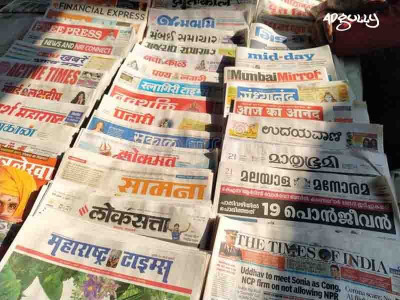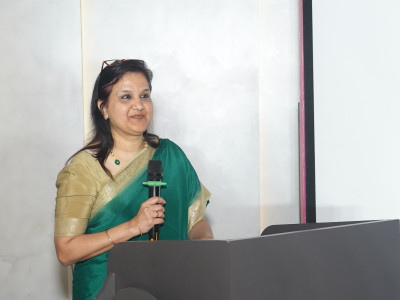What has kept the regional print market buoyant in challenging times?
After facing severe disruption during the pandemic period, specifically 2020, when publication and distribution had come to a standstill, print media has been making a strong comeback. Because of cross-device platforms that appeal to their local flavour, regional media has been reaching out to a larger audience.
Even new-age businesses like e-commerce, fin-tech, and start-ups, along with conventional industries such as Real Estate, Education, White goods, Auto, Jewellery, Lifestyle and others are looking to further strengthen their position, penetrate these markets, and gain audience attention. This economic growth has resulted in a strong demand for advertising space in regional print media.
ALSO READ:Indian fragrance market pegged to grow 20% in the next 5 years, say experts
Factors making regional print a strong medium
Harrish Bhatia, President Sales & Marketing, DB Corp, pointed out, “The print media has always been a favourite of the advertisers for its ability to reach a large audience. The ease of carrying out geo-control campaigns and bespoke communication with category-wise audience, print media will offer a lucrative platform for advertisers.”
For B Srinivasan, Managing Director, Vikatan Group, regional print provide the brand with multiple handles to reach deeper markets and create avenues for dialogue with a diverse audience because of the cross-device platforms. He added, “Digital penetration has increased opportunities for brands to connect with the region’s roots faster, smarter, and easier with a single click. Most importantly, people are becoming more aware of and interested in hyperlocal news.”
Varghese Chandy, Vice President - Marketing, Malayala Manorama, remarked, “Regional publications have always had higher reach in their respective states as compared to national ones. A regional publication would always have the advantage of understanding the local nuances and interests better.”
Chandy further said, “At the Malayala Manorama daily, in addition to carrying the most important news for the day, there is a strong emphasis on being hyperlocal and catering to the need of carrying news on a reader’s immediate vicinity. The investments we have made over the years in the news gathering and delivery mechanism enables us to bring out more than 100 different versions of the Malayala Manorama daily every day, carrying local news content related to a reader’s surrounding area. We believe this creates strong affinity for our readers to the Malayala Manorama daily.”
“This could be the reason why English newspapers’ reach in Kerala is very minuscule. No.1 English Daily in Kerala reaches only 0.5 % in Kerala. Malayala Manorama alone reaches more than 28% of Kerala,” he added.
Viewers are more mature than ever before, owing primarily to the availability of diverse content. The expansion of newer avenues has created a sense of expectation among readers/ viewers. Amidst all these, to keep the readers engaged has become one of the top priorities.
For Dainik Bhaskar’s Harrish Bhatia, the most important factor that readers look for in their news providers is credibility and hyper local nature. He noted, “In April 2021, Ormax Media released the results of the second edition of its ‘Fact or Fake’ Report. The report highlights that almost 2 out of 3, or 65% news consumers in the country, see fake news as a major concern. In this situation it is indeed significant that Print media has come out on top by a large margin and continues to remain ahead of other mediums with a 62% credibility score. It is, therefore, the editorial strategy that is reader-centric that will always ensure that viewers are engaged.”
When asked whether the proportion of advertising in regional print has gone up, Chandy responded in the affirmative, and added “From the INS advertising revenue data, a trend that we see is the declining share of English publications. Over the past decade, there has also been a drop in advertising volume share for English as well.”
Vikatan Group’s B Srinivasan was of the view that brands must be more focused and specific in their pursuit of simple and understandable content. “Regional media, including print, must look beyond mundane content and thrive on newer content that helps people connect. The concern about expanding mediums and accessibility distorts the focus and ideas. To create the right thing for the audience, brands and publications must come up with new content and, more importantly, accept change/ reality. Publications must be strong content creators and explore new avenues to reach a larger audience while also building a strong platform for brands to sail further,” he noted.
Speaking on what has kept the regional market buoyant, Chandy said, “Christmas, which is Kerala’s 2nd largest shopping season, was good. Retail advertising has been strong. In a challenging economic environment, it makes even more sense for retailers to advertise on print in Kerala, since the response is immediate. Another positive trend is that the OTT platforms have also realised that regional content is key to improving the subscription base. In Kerala, all OTT platforms have used print to announce their new film releases.”
How elections are shoring up revenues
Owing primarily to the pandemic, print saw a significant decrease in 2020, but state assembly elections played a critical role in halting the further decline. Regional print was widely used in the recent Tamil Nadu elections, which aided in the conversion of the state’s overall advertising spending. Categories such as retail, auto, eCommerce, etc., have seen significant reductions in print spending, whereas categories such as FMCG, EdTech, Healthcare have seen an increase in spending due to COVID.
Vikatan Group’s B Srinivasan said, “The beginning of 2021 was ruled by political parties that empowered regional print. The year 2022 appears promising, with a spike in regional print as brands become more focused on reaching the right audience, and regional print helps them achieve their goals.”
Sudeep Kumar, General Manager, Media Solutions (Print), Mathrubhumi Group, added here, “Elections always give us more revenue from the government and political category. Government spending tends to rise in pre-election years, and political ad spending in print will rise as well, but this will not result in overall growth, owing to the poor performance of specific categories during the election period.”
While Kerala is not among the states going to elections in the next two months, but based on past trends, the forthcoming elections will surely boost print revenues from a national perspective, Chandy said.




















Share
Facebook
YouTube
Tweet
Twitter
LinkedIn